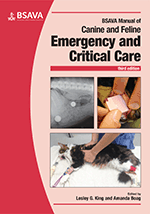
Full text loading...

Anaemia, bleeding disorders and thromboembolism are all life-threatening conditions, rapid diagnosis and timely intervention are essential to mitigate the risk of death. This chapter considers the emergency approach, history and clinical examination, laboratory assessment, diagnostics and treatment of anaemia, primary and secondary bleeding disorders, hypercoagulation and thrombosis
Haematological emergencies, Page 1 of 1
< Previous page | Next page > /docserver/preview/fulltext/10.22233/9781910443262/9781910443262.13-1.gif

Full text loading...


















